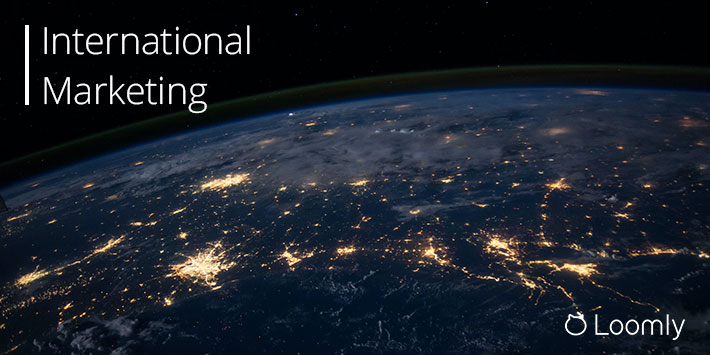International Marketing: How to Build a Global Brand
Rapid technological advances and globalization mean organizations now have to consider international marketing.
Exceptions aside, such as the TikTok ban in the US or the Facebook ban in China, all brands are global by default since you can market products and services everywhere via your website or social media accounts.
Customers are only one click away, but as a result, your products and services compete with other products and services from all over the world.
The question is: How do you build a brand that resonates with different nations with different cultures and regulations?
In this guide, you’ll discover what international marketing entails and why it matters more today than ever. We’ll then look at how you can design and implement a successful global marketing campaign for your brand.
Let’s start!

Manage all your social media accounts in one place.
Craft, schedule, & auto-post content to all your social channels, then track analytics and manage interactions from a single, easy-to-use dashboard.
What is International Marketing?
International marketing is the application of marketing principles in more than one country. It extends a company’s local marketing strategy by focusing on potential buyers’ needs in other countries.
While some products or services are designed only to be sold locally, others can be marketed anywhere.
International marketing, also known as global marketing, involves customizing your marketing Ps – product, place, price, promotion – to meet people’s preferences from different nations and cultures.
Why Does International Marketing Matter More Today than Ever?
Rapid technological advances and globalization tend to make all brands global by default, which you can see in the rise in global exports.
According to Statista, the global trade value of goods exported throughout the world rose from 6.45 trillion USD in 2000 to 19.5 trillion USD in 2018:
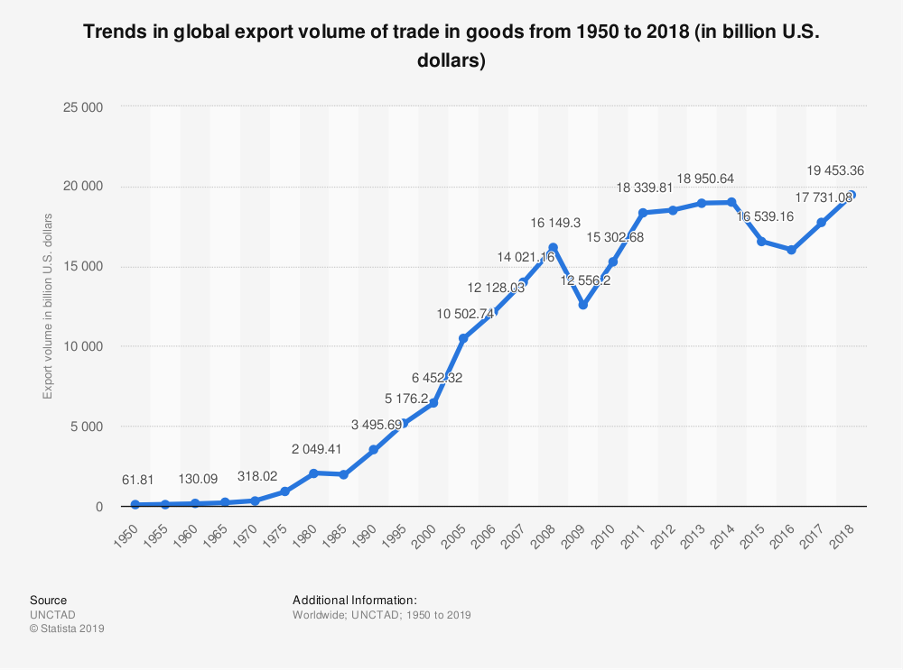
Even if they don’t have a physical presence in other countries, companies can market their products and services globally via their website or social media accounts.
Although some companies will have more hurdles to overcome when it comes to exporting their goods and clearing customs, those brands who market themselves internationally can:
- Expand their target market – by exploring overseas opportunities to increase their market share and customer base.
- Boost their brand reputation – as international brands are perceived to be better than small local brands. That’s why brands use messaging like ‘shipping worldwide’ in their marketing campaigns.
- Increase their revenue significantly – through greater market share and customer base.
- Connect with foreign business partners – as global brands build their international networks. For example, Apple designs its iPhone in California, manufactures it in countries like China, Korea, Mongolia, and Taiwan, and markets it globally.
- Explore new working practices – as organizations try new methodologies from abroad like Six Sigma and Theory Z back in their headquarters. For example, Uber now accepts cash payments in over 130 cities after expanding into locations where people prefer to use cash.
Examples of Successful International Marketing Campaigns
Here are three examples of brands that have enjoyed successful international marketing campaigns.
Airbnb
Airbnb is the website people go to when they want to book accommodation anywhere around the world. They can now choose from around 4 million Airbnb listings worldwide, covering more than 191 countries and 65,000 cities.
One of its best international campaigns was the #OneLessStranger social media campaign, which they classed as a “global, social experiment.”
Airbnb asked its community to perform random acts of hospitality for strangers, and then take a video or photo with the person and share it using the hashtag.
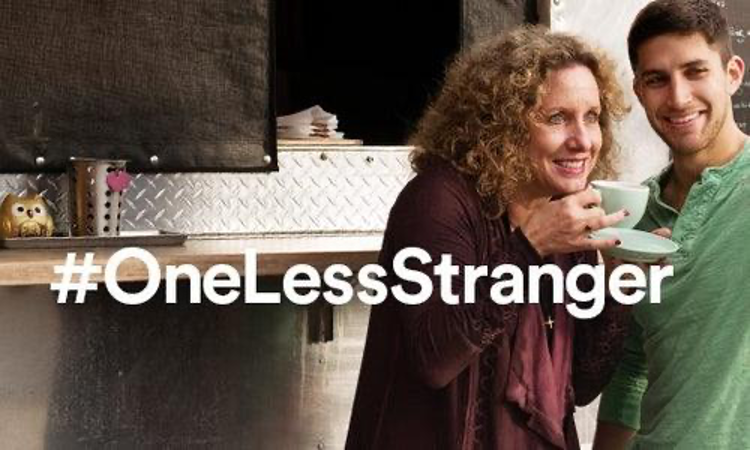
More than 3 million people worldwide engaged, created content, and talked about the campaign in the 3 weeks following the campaign launch.
Red Bull
You could be forgiven for thinking Red Bull is a US company as they do such a magnificent job with their international marketing of extreme sports events. For example, the Red Bull Grand Prix in Indianapolis, the Red Bull Air Race in the United Kingdom, and the Red Bull Soapbox Race in Jordan.
But their greatest achievement was when they captured the attention and imagination of the entire world with the Red Bull Stratos Project.
On October 14, 2012, Austria’s Felix Baumgartner astonished a worldwide TV audience with a parachute jump from the edge of space.

Red Bull invested 10% of their annual global marketing budget ($330m) to fund the project, so they clearly believed in it. And it turned out to be a tremendous success.
Sales rose by 7% in the following six months generating $1.6bn. The year after, they sold 5.2 billion cans – an increase of 13% increase – and many regions saw jumps of double figures.
The energy drink now sells in 171 countries worldwide and ranks as the world’s 61st most valuable brand.
McDonald’s
McDonald’s is the world’s leading global foodservice retailer with over 37,000 locations in over 120 markets. Over 90% of McDonald’s restaurants worldwide are owned and operated by independent local businessmen and women.
While keeping its overarching branding consistent, McDonald’s practices “glocal marketing” – Think Global Act Local.
For example, it uses country-specific menus featuring local foods.
In the Middle East, you can get the McArabia Chicken – Two Halal grilled chicken patties with lettuce, tomatoes, onions, and flavorful garlic sauce held together by Arabic bread:
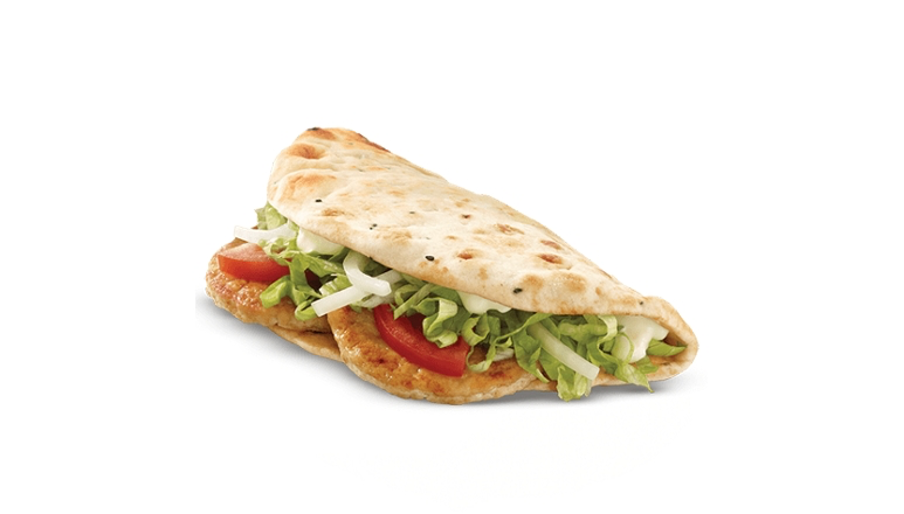
In Italy, you can order a Panzerotti – A warm and flowing heart to give you a moment of goodness. Italian Panzerotti with 100% tomato and mozzarella are a pleasure for the palate:
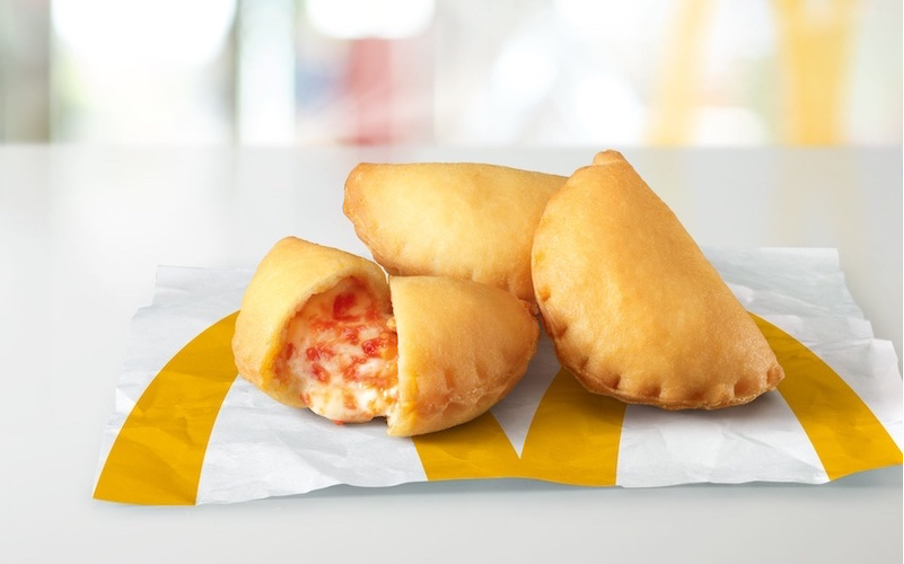
This “glocal marketing” approach maintains McDonald’s position as a leading international brand.
How to Design and Implement a Successful International Marketing Campaign for Your Brand
Now it’s your turn.
Follow the five steps outlined below to design and implement a successful international marketing campaign for your brand.
Step 1. Research your target market
Every company needs to conduct thorough market research if they want to succeed in international marketing.
It’s crucial to understand the environment you’re targeting as each country has different norms and behaviors. For instance, you’ll need to research how people prefer to be contacted and what messaging is appropriate.
Without proper research, you may offend your new audience. For example, dogs are perceived as dirty animals in the Middle East, so a campaign featuring dogs as man’s best friend could be highly offensive.
It’s also worth checking your current social media and web analytics to see which countries are already engaged with your brand. If you already have interest from a foreign country, it might be worth starting your international marketing there.
Step 2. Define your campaign goals
Next, you need to define your goals and objectives for the marketing campaign. For example:
- Why are you expanding your efforts?
- What are you looking to achieve?
- How will you measure success?
Once you’ve established your goals, you can start planning your campaign to achieve those goals.
Step 3. Plan your campaign
Having established your campaign goals, it’s time to start planning.
1. Establish your budget and resources
Before the campaign gets underway, you need to be clear on your marketing budgets and resources. Are you going to manage budgets centrally, or will local managers be responsible for their individual budget? Consider what approval process to put in place and ensure there is clear communication.
Aside from budgets, you’ll have to plan resources using HQ and local people. If your existing marketing team is inexperienced, you may want to consider hiring marketers who have expert knowledge of the foreign target market or have international marketing experience in general.
Another option could be to develop a joint partnership with a small business and pool resources or set up partnerships with companies in the target market.
2. Develop your plan
When you’re developing your marketing campaign, it’s important to think globally from the outset. One mistake companies make is creating a typical US marketing plan and then re-working it for each foreign market. It’s much more effective to look at the big picture from the start. Then you can look at each market, in turn, to see what minor changes are required.
As you develop your plan, make sure that it suits your target demographic. You’ll need to consider things like:
- Cultural differences: Be sensitive to political, cultural, and social differences to ensure your campaign is not offensive. Use appropriate images, words, and scenarios. For example, some cultures associate specific colors with luck or with death. Be mindful of the use of genders and gender roles. For instance, some countries have strict rules on the showing of faces.
- Influencers and celebrities: Ensure any influencers or celebrities you use in the campaign are well-known in target locations. For example, HelloFresh works with TV presenter Davina McCall in the UK but uses influencer Jessica Alba in the US.


- Humor: Be careful if you try to use humor in your campaign because it may backfire. Every language, culture, and country is unique, so get locals on board to plan and assess content.
- Language: Words have different meanings in different countries. Football in the UK is what the Americans call soccer – American football is a totally different ball game.
- Events and holidays: Each country has its national holidays and events, so you may need to adjust campaign dates in your planning.
3. Customize your approach
What works well in one country or region may not work in other markets. That’s why you’ll need to customize and personalize your campaign for each location. For instance, it’s worth using creative specialists with local knowledge, like copywriters and designers, to tailor taglines, headlines, content, and images for your campaign.
Also, check the following:
- Products or services naming: Make sure nothing in your products and services is offensive or misunderstood in local languages.
- Government regulations: Every country has different taxes, trade, and marketing laws, so make sure no restrictions are blocking your campaign ideas.
- Branding and trademarks: There might be businesses that have trademarks that affect your brand. For example, Burger King is called Hungry Jacks in Australia. Or you might want to use different branding, like Lay’s chips in the US, is called Walkers in the UK, and Smith’s in Australia.
4. Localize your message (Glocal)
When you’re targeting a global audience, you’ll have to be “glocal” (global + local) with your message.
For example, Quickbooks displays a welcome message based on a user’s location to suggest they use the localized product:
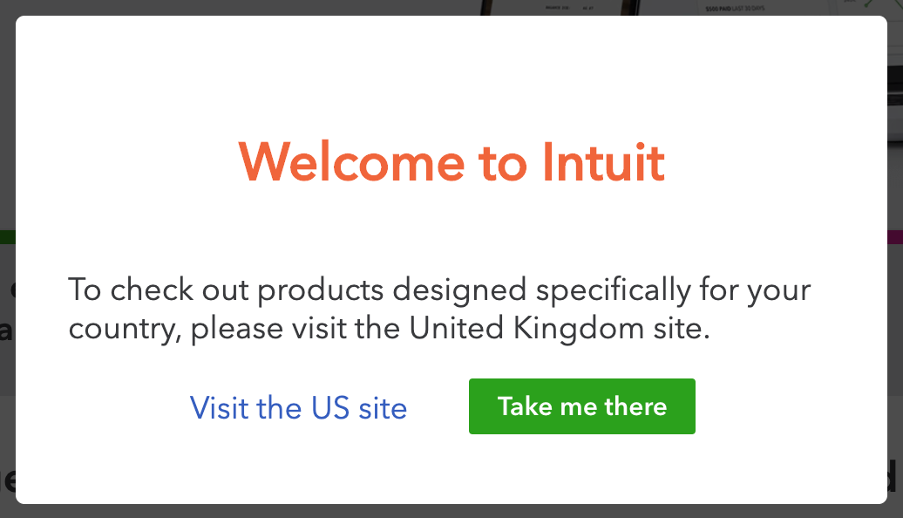
In the US, Quickbooks focuses on automating tax prep for the self-employed:
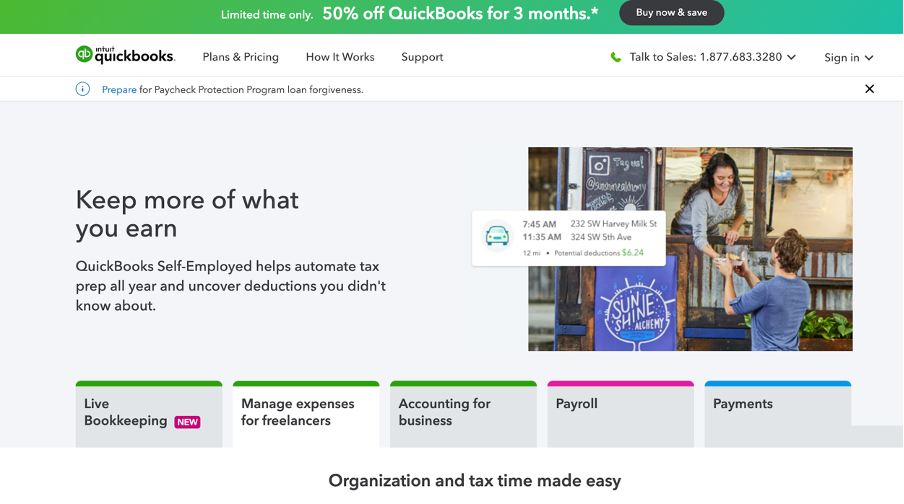
But in the UK, QuickBooks focuses on making it easier to complete your HMRC Self Assessment:
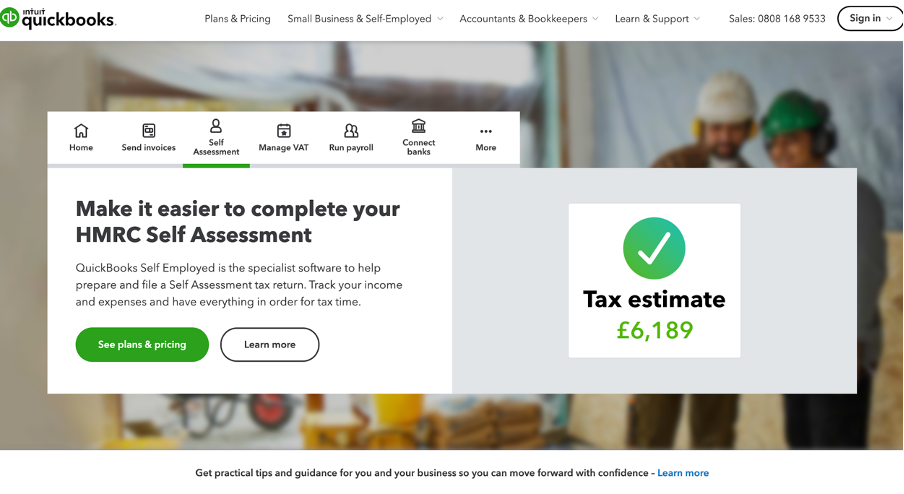
You’ll also want to avoid the pitfall of merely translating your message into the local language. When KFC opened in Beijing, the restaurant accidentally translated its famous slogan “Finger-lickin’ good” to “Eat your fingers off.” Fortunately, KFC managed to recover, but it shows how easily your message can get lost in translation.
5. Select your marketing channels and media
It’s essential to select the best marketing channels and media for each target market. For example, WhatsApp would be considered a vital marketing channel in South America, but not so important in the USA.
It’s also worth using local marketing agencies to support your campaign. For example, Nike China used marketing agency, Digitas, to work alongside their Shanghai design studio to create a WeChat app for the Chinese market:
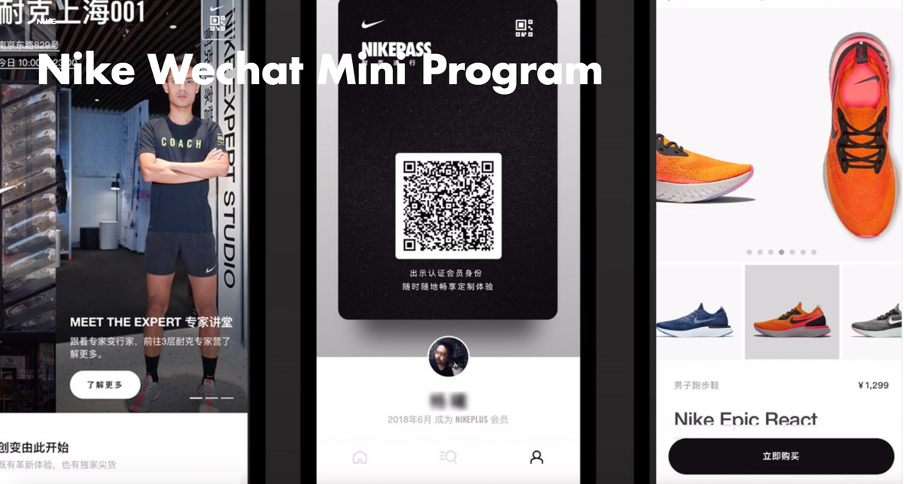
Step 4. Execute your campaign
If you’ve planned your international marketing campaign thoroughly, then it should be relatively straightforward to execute. The most successful campaigns are those that are well-planned and managed by a project manager.
The best project managers will orchestrate the whole campaign with all relevant stakeholders to clearly define tasks and responsibilities. They will also communicate effectively with all of the involved parties throughout the campaign’s lifecycle to ensure everything is executed to a high quality and completed on time.
Step 5. Measure and adjust your campaign
At the end of your international campaign, you’ll need to measure your outcomes to see if you achieved your goals. This is the time to learn what went well and what didn’t so you can make adjustments for your next campaign.
International Marketing in a Nutshell
International marketing, also known as global marketing, involves customizing your marketing to meet people’s preferences from different nations and cultures. Nowadays, all brands are global by default following rapid technological advances and globalization.
If you want to design and implement a successful international marketing campaign, you’ll need to follow these five steps:
- Research your target market.
- Define your campaign goals.
- Plan your marketing campaign.
- Execute your campaign.
- Measure and adjust your campaign.
